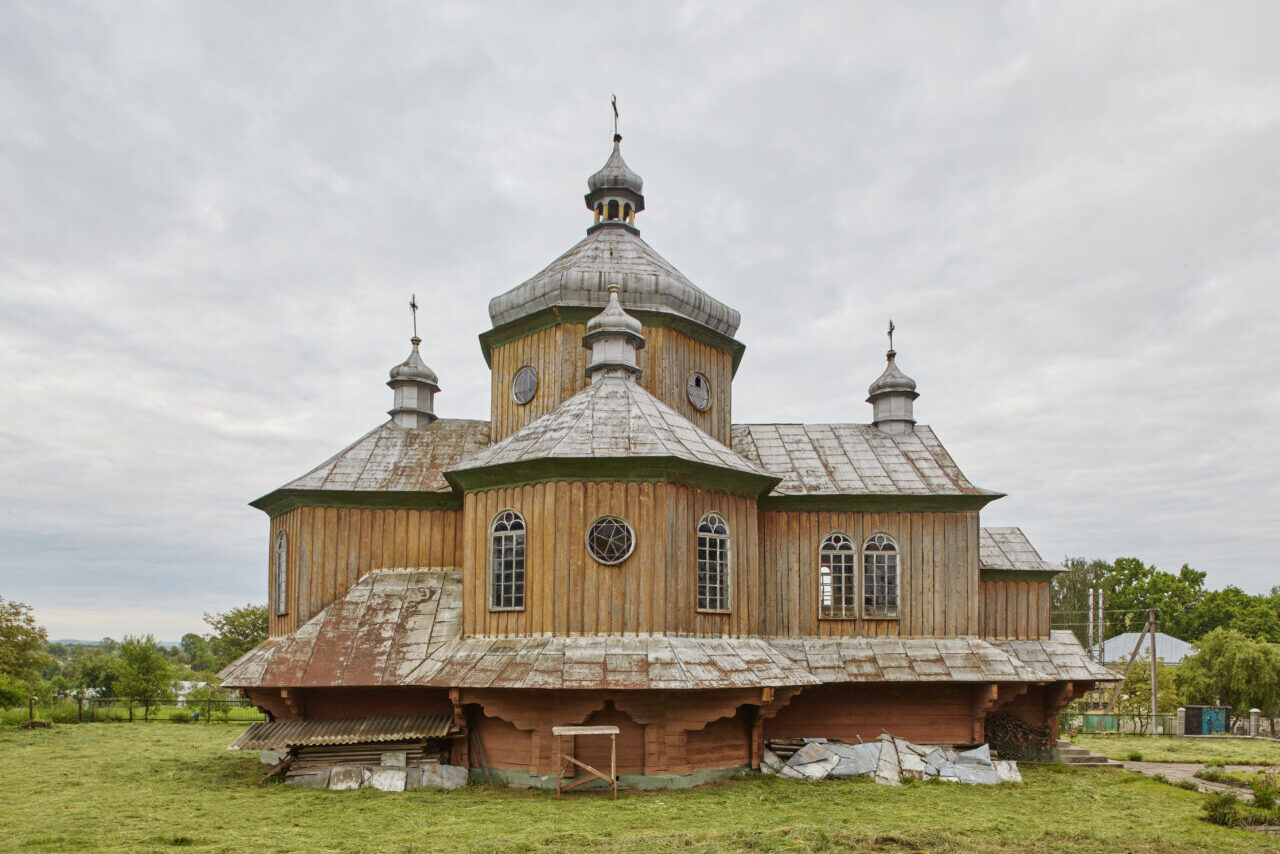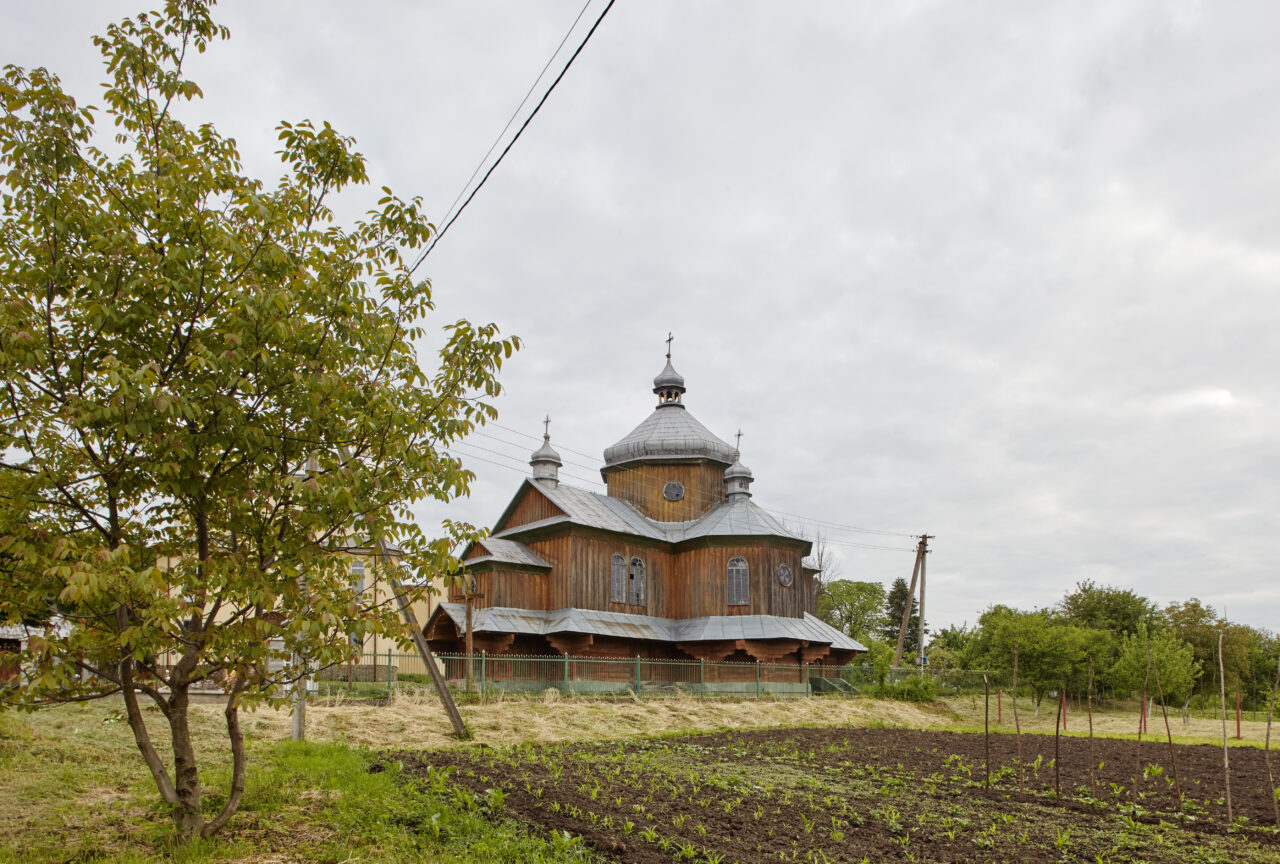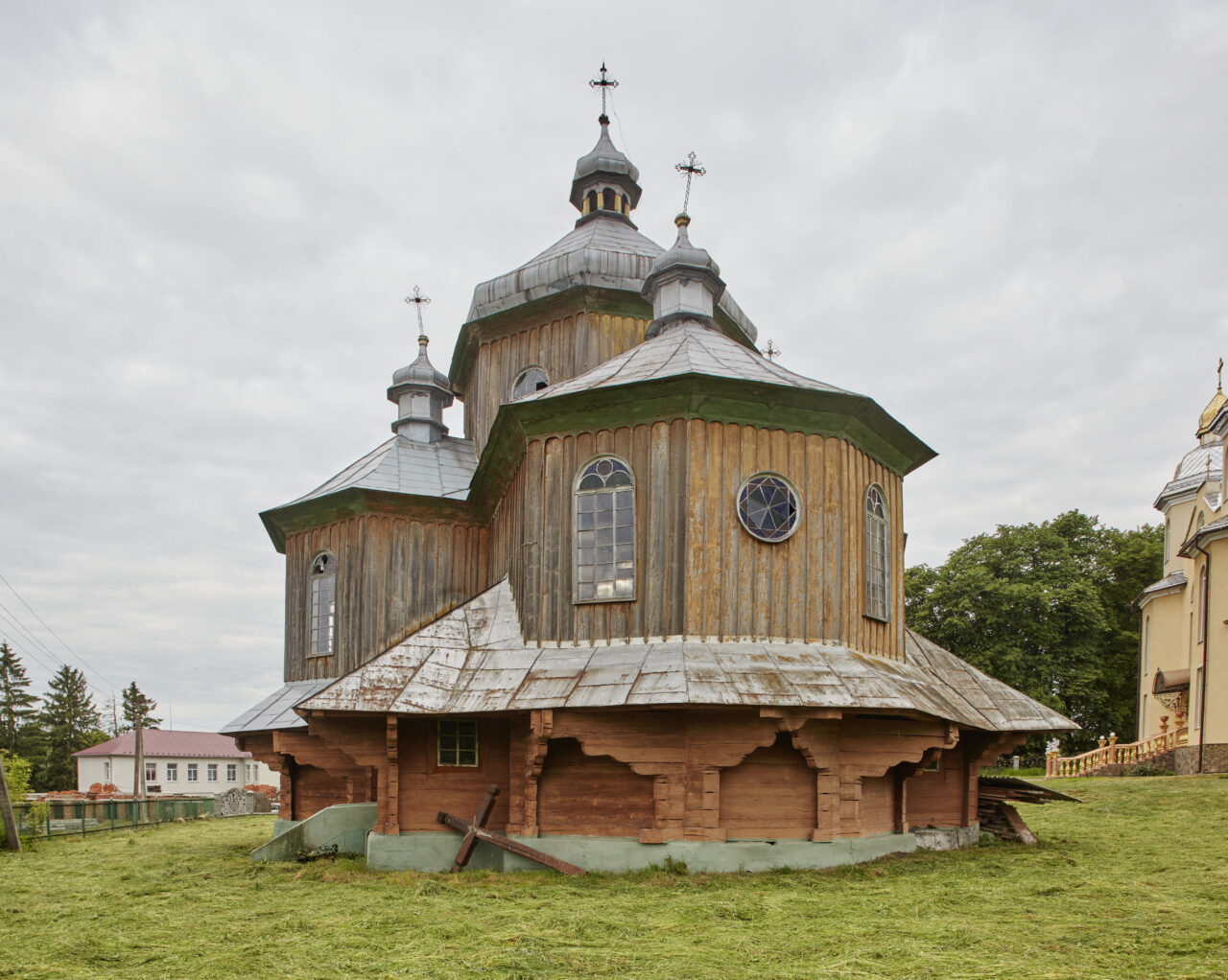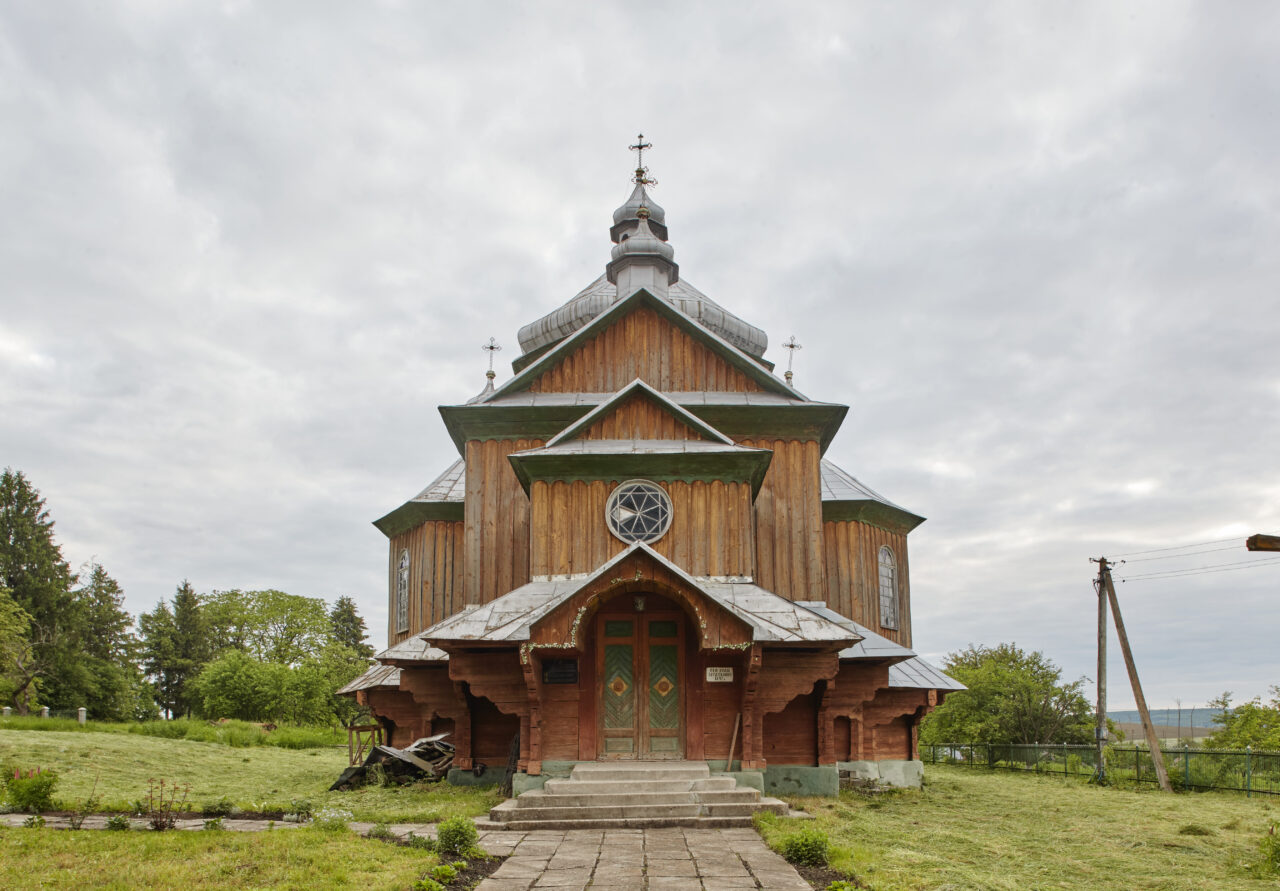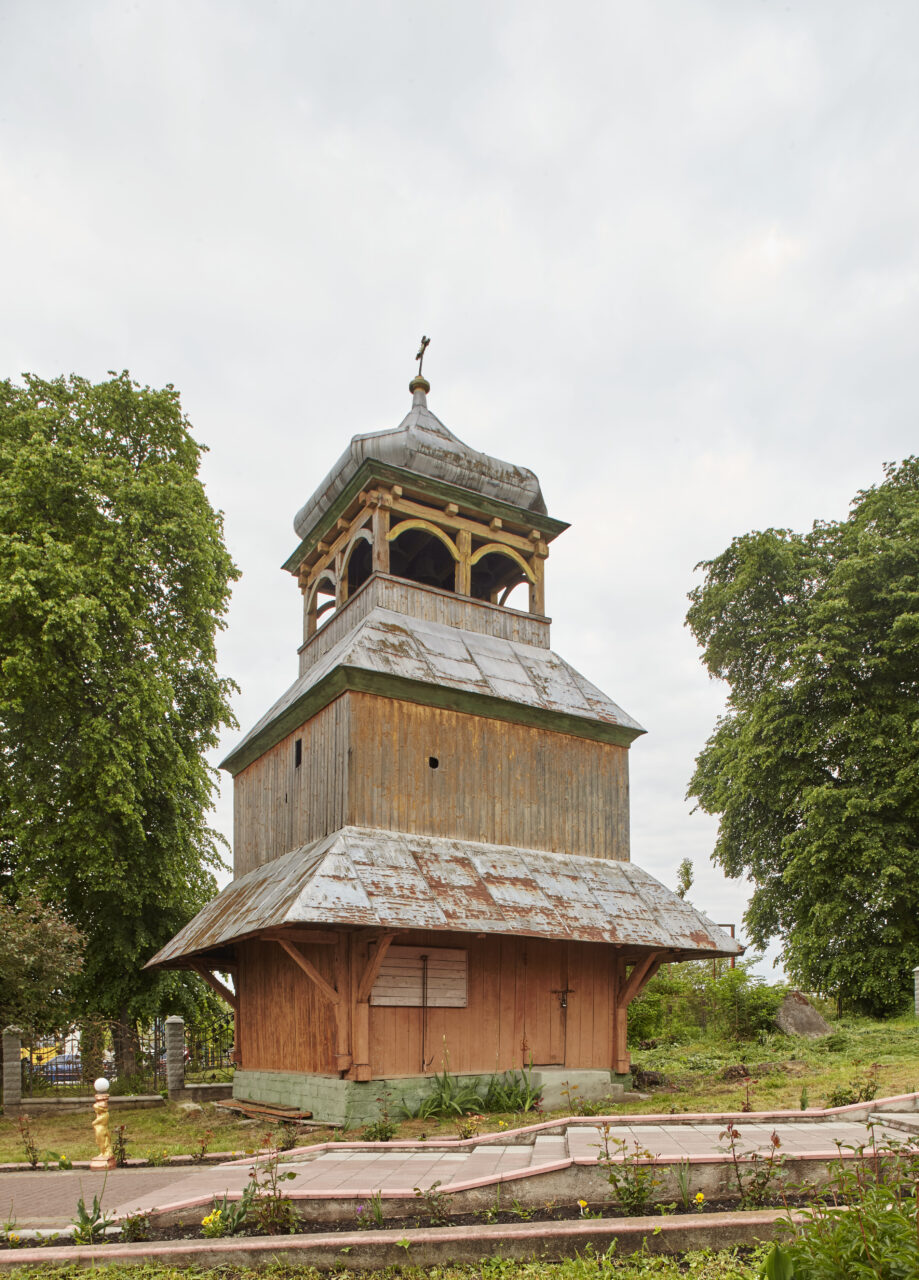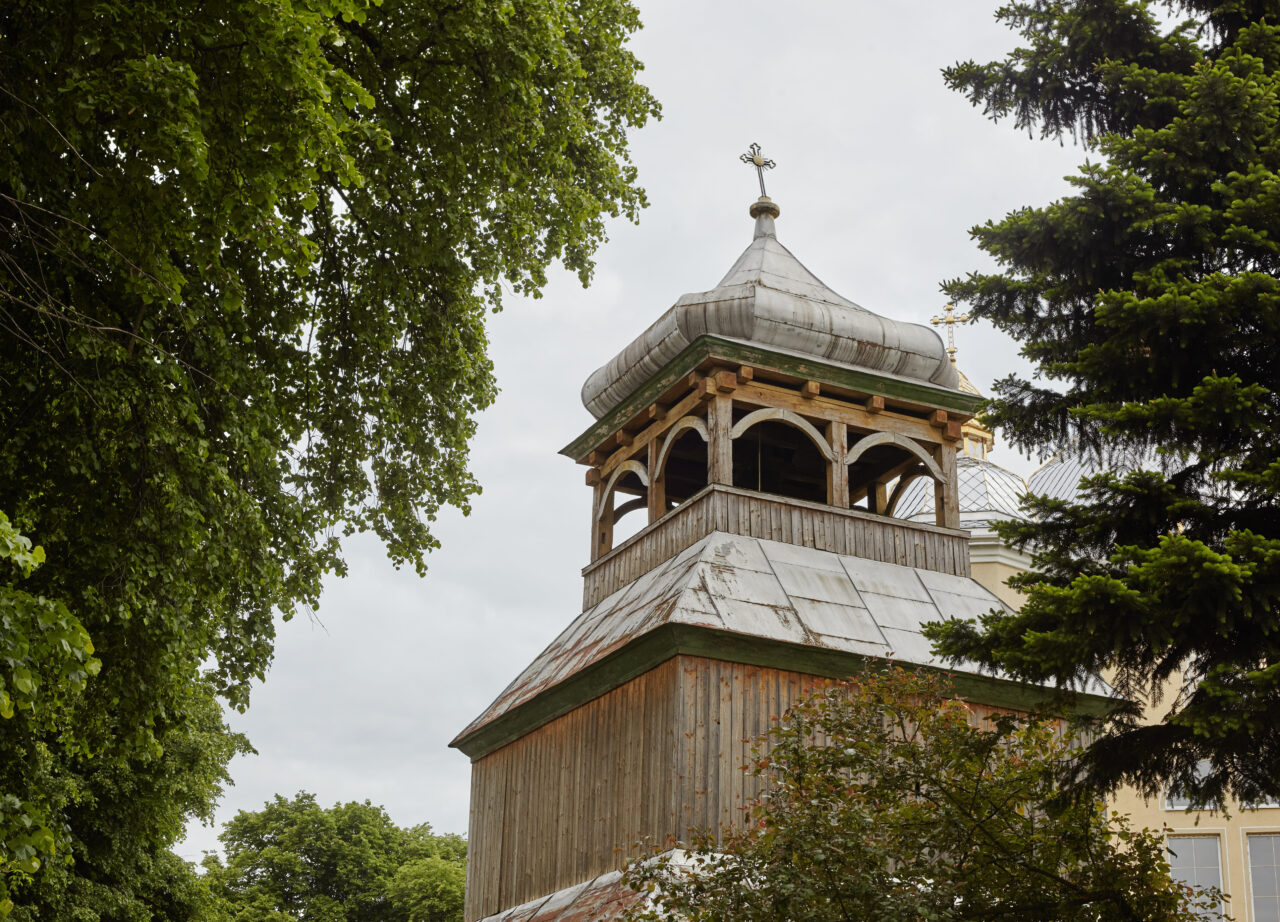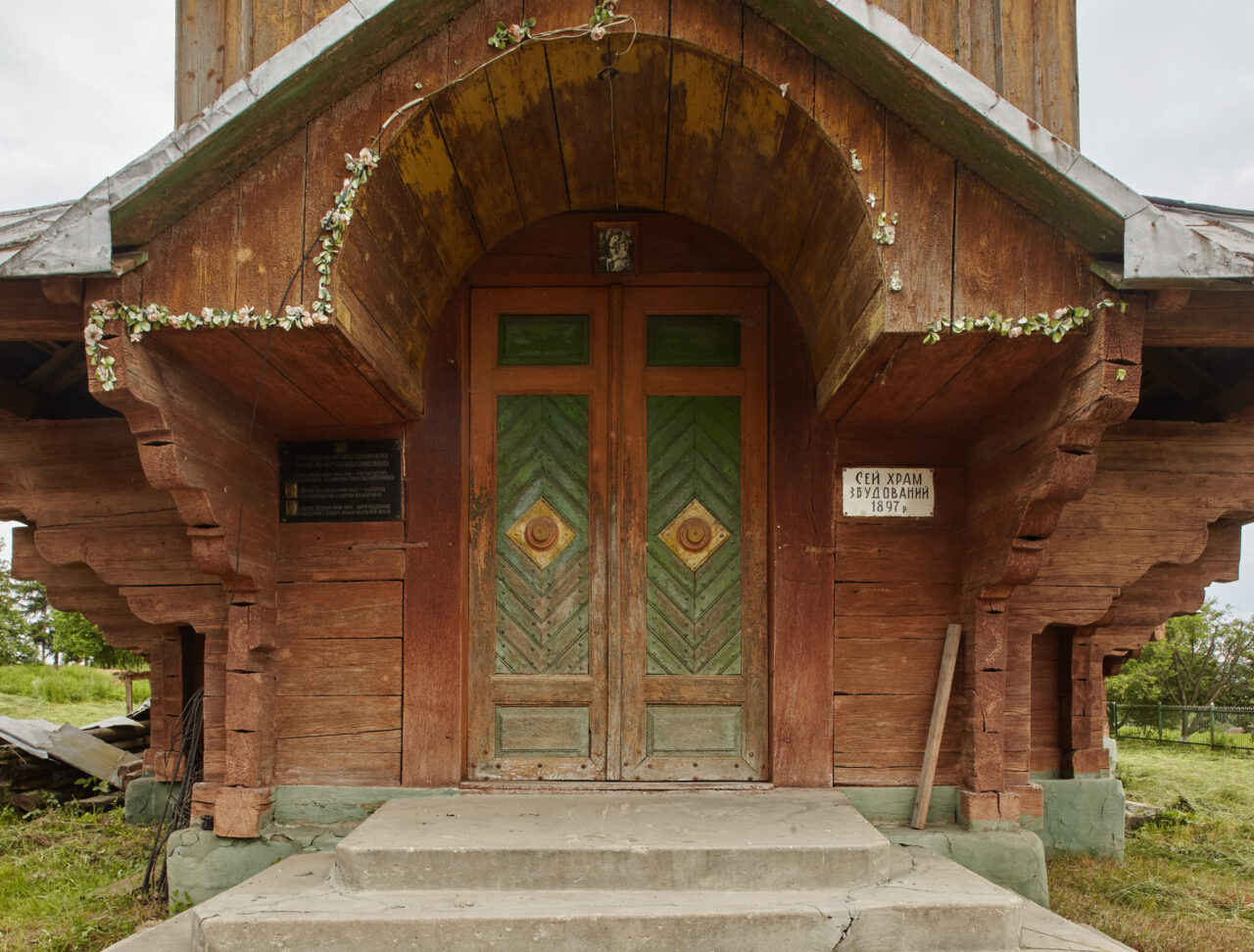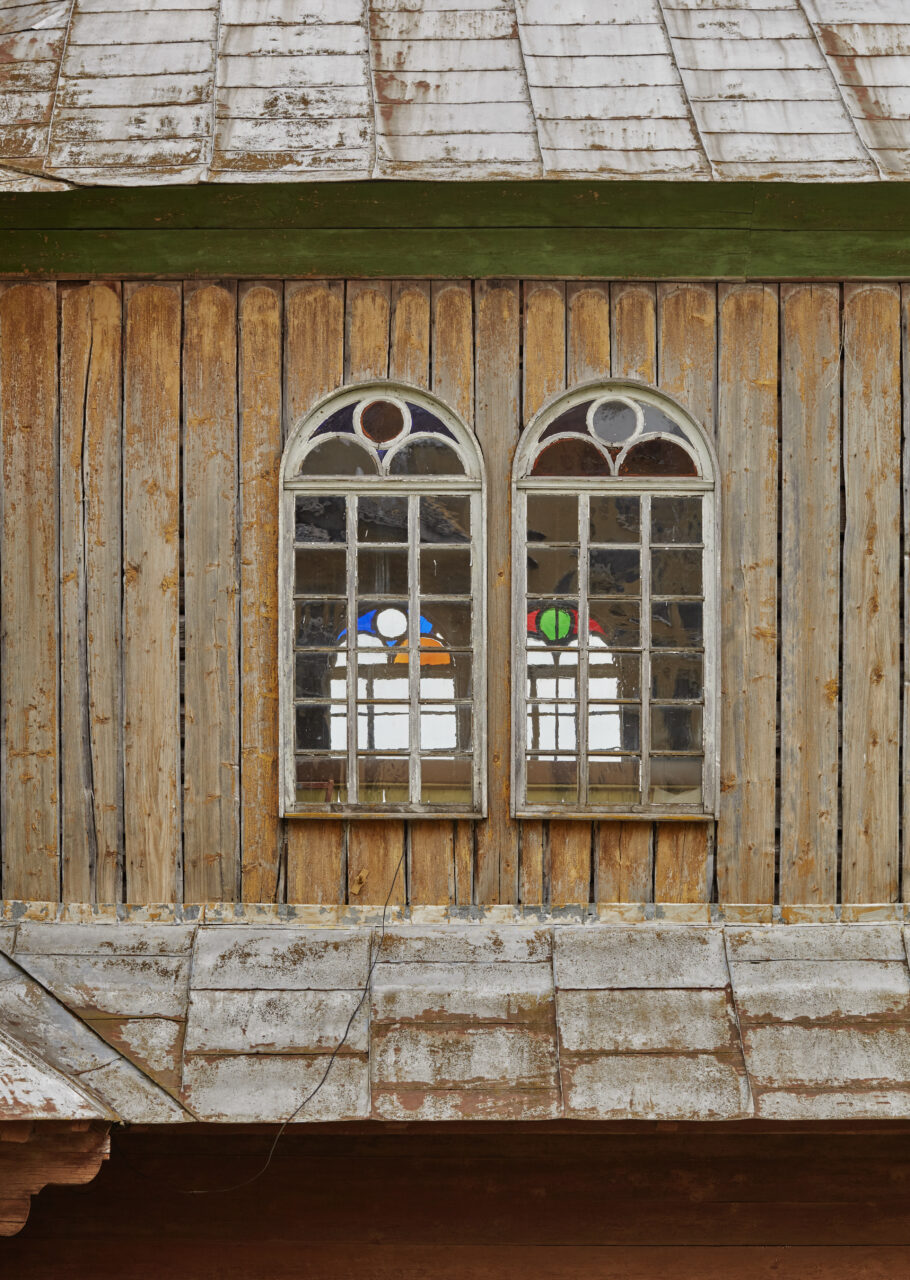The first existence of the church in the village was recorded in the lustration of the Rus province in 1564-1565. It is unknown when the first building was constructed. The latest entry on the Keys of Understanding’ by Ioakynnii Haliatovskyi in 1653 we find out that there was St. Basil’s the Great church in the village. According to the inscription on the door posts of the south door to the old village church narthex in 1733, the next church was built. It is probable, that the temple is older and dates back to at least the 16th century, and in 1733 it was moved to a new location.
Not only the temple history is special, but also its architecture. The church is one of the brightest representatives of the Boiko folk school. The building sophistication is provided by a three-log system of the early type. The logs overhead cover form hipped roof, which give the building authenticity. The central frame is much higher and wider than the two sides, but well-preserved proportions, due to which the temple looks especially harmonious and completed. It is worth noting that all three crosses in the church are completely different and do not resemble each other.
In the 1970s the church was restored, while the building originality was preserved. It is an architectural monument of national importance.

